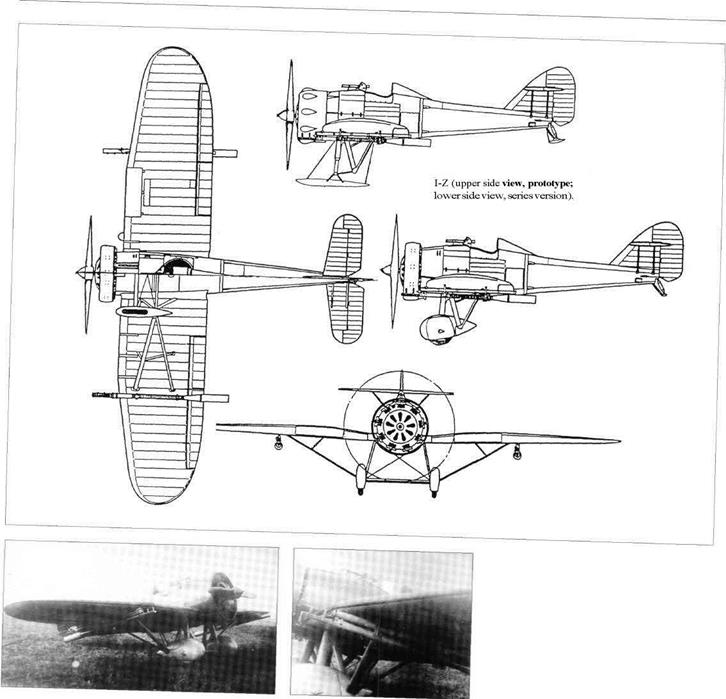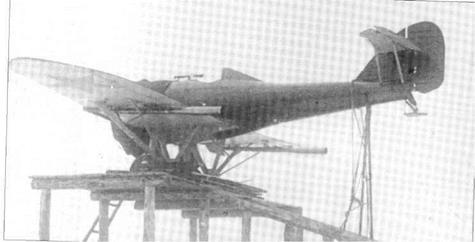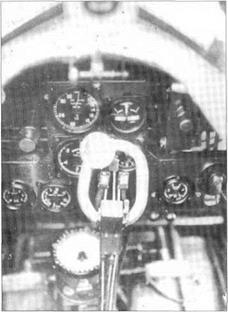Grigorovich I-Z
Purpose: To evaluate a fighter with APK recoilless cannon.
Design Bureau: Team led by Dmitrii PavlovichGrigorovich, inVT(internal prison) run by OGPU (secret police, later NKVD) at Factory No 39.
The story of the development in the Soviet Union of large-calibre recoilless guns, under the leadership of L V Kurchevskii, is outlined in the entry on the Tupolev ANT-23. By the end of the 1920s design bureaux were receiving contracts for experimental fighters designed to be armed with such weapons. In late 1929 Grigorovich was sent to Central Construction Bureau 7, which was really Hangar 7 at Factory 39, an OGPU secure prison for designers. Here he led the design of the Z, a secret monoplane to be armed with two 76.2mm (Sin) APK-4 guns. To speed construction the powerplant group and forward fuselage of the first prototype were the same as those of the Polikarpov I-5, which was also built in Hangar 7. The complete aircraft, called I-Z (Fighter Z) was flown by Benedikt Bukhgol’ts in (it is believed) early May 1931. It was inspected by Stalin, Voroshilov, Molotov and others on 6th July 1931. Subsequently a small series of21 production I-Z fighters were produced at GAZ No 39. These were still regarded as experimental. In February/March 1933 aircraft No 39009 was placed on a high
platform and used for firing trials, and in September 1933 No 39010 underwent NIl-WS testing. Two of these aircraft were later used in Zveno trials, as described under Vakhmistrov. In 1934-35 Factory No 135 at Kharkov built a further 72, with modifications, designated IP-1. These saw only limited use, partly because of difficult spin recovery, but were not considered as experimental.
At this time monoplanes were still structurally difficult, and the wing, though of torch-welded stainless (Enerzh-6) lattice construction, still needed underwing bracing to the fixed landing gears. Apart from the semi – monocoque rear fuselage, the covering of the whole airframe was fabric. The prototype had a Bristol Jupiter, in a helmeted cowling, while the first production batch had the same 480hp engine built under licence as the M-22 and cowled in a Townend ring. The second batch, from Kharkov, had the 700hp M-25 (Wright Cyclone). The main landing gears variously had spatted wheels, plain wheels or skis. The guns were suspended from both main spars outboard of the struts (just inboard on the first prototype), and were fed at a slow rate from a seven-round magazine in the wing. A PV-1 machine gun was fitted to right of centre ahead of the windscreen to assist aiming using the optical sight. The tailplane was mounted high to avoid the rear blast from the APK-4s.
This neat aircraft did all that was expected of it, but none of Kurchevskii’s big guns ever became operational.
|
I-Z cockpit.
|
|
|||||||||||||||||||||||||||||||||||
|
|||||||||||||||||||||||||||||||||||
|
|||||||||||||||||||||||||||||||||||
|
|||||||||||||||||||||||||||||||||||
|













